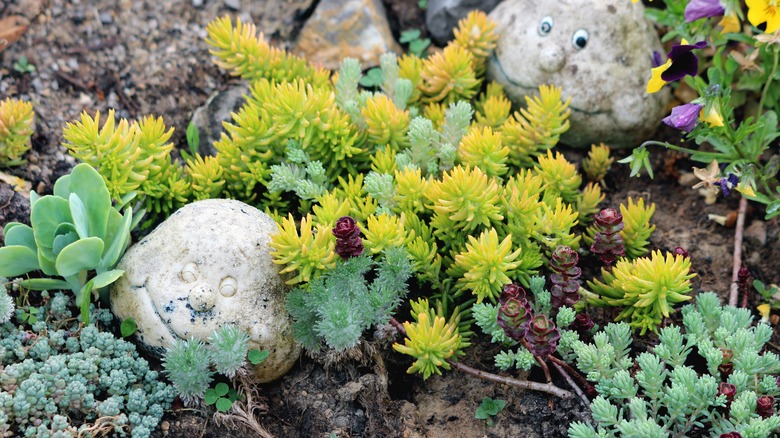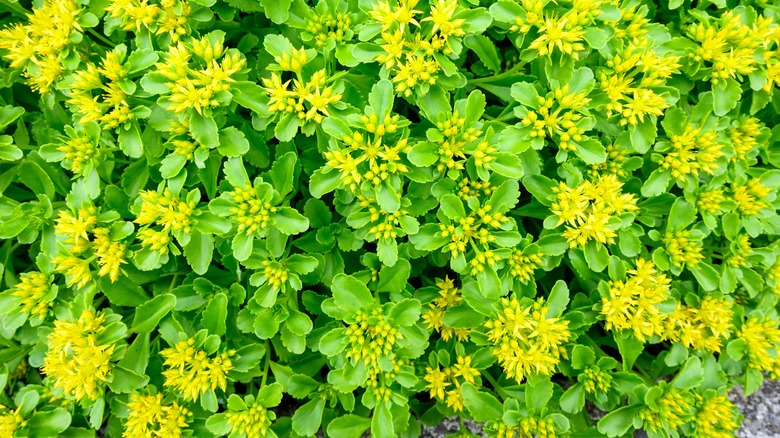Mistakes To Avoid When Growing Sedum As A Grass Alternative
Considering how water and labor intensive turf grass lawns can be, it's no surprise that alternatives like sedum (Sedum spp.) lawns are quickly increasing in popularity. Thanks to sedum's drought tolerance, it can be an especially good option for anyone impacted by drought who wants to try out the xeriscaping trend. As fantastic as sedum can be as a grass alternative, though, you'll need to make sure you choose the right type of sedum, plant it in areas with plenty of sun, and avoid giving it too much water or fertilizer.
Sedum is a large genus, so it's important to pick the right species of sedum for your grass alternative. While many types of sedum are perfect ground covers, others, like 'Autumn Joy' sedum (Sedum spectabile 'Autumn Joy') can grow over a foot tall and work better for adding height to a drought-tolerant garden than as a grass alternative. For a ground cover, instead consider going with a low-growing species like trailing stonecrop (Sedum sarmentosum) or 'Angelina' stonecrop (Sedum rupestre 'Angelina'). With 'Angelina' hardy in zones 5 through 9 and trailing stonecrop hardy in zones 3 through 9, they both make excellent options in large parts of the United States.
Caring for a sedum lawn
Sedum, as a succulent, thrives in sunny locations and can generally be grown in part sun locations as well. If you're looking for a lawn alternative for a shady yard, you may want to try using plants like moss or sweet woodruff (Galium odorata) instead of sedum. These can thrive with far less light, though be aware that sweet woodruff can become invasive in some situations.
Sedum also requires well-draining sandy or rocky soil to grow well and many varieties struggle in dense clay soil. While it may be tempting to enrich and fertilize your sedum's soil, this is rarely necessary and overfertilizing your sedum can actually be detrimental. This is because sedum can become floppy or leggy if overfertilized. A single application of fertilizer in spring is generally plenty for most sedum varieties. You should also be sure you're not overwatering your sedum as this can lead to floppy plants or even cause your sedum to rot and die.

